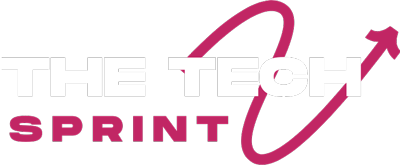In today’s fiercely competitive marketplace, where consumers are bombarded with choices, simply having a great product or service isn’t enough. To truly stand out and forge lasting connections, businesses need something more profound: a memorable business identity. This isn’t just about a flashy logo or a catchy slogan; it’s about crafting the very soul of your enterprise, a strategic asset that deeply influences consumer perception and, ultimately, your bottom line.
What Defines a Memorable Business Identity?
A brand identity is the sum of all elements a company creates to portray the right image to its consumer. It’s how customers perceive you – your reputation, your promise, and the emotional connection you build. Think about your own purchasing habits: why do you choose one airline over another, or one coffee shop over a competitor with similar pricing? Often, it boils down to trust, reliability, and the overall experience you associate with that particular brand.
When executed effectively, a strong brand identity delivers measurable results:
- Enables Premium Pricing: A strong brand creates perceived value that extends beyond functional benefits, allowing for higher pricing.
- Reduces Customer Acquisition Costs: Stronger recognition and recall mean you spend less to attract new customers.
- Builds Resilience: Customer loyalty forged through a strong brand helps businesses weather market downturns.
- Creates Entry Barriers: A distinct market position makes it harder for competitors to replicate your success.
- Increases Employee Engagement: A clear brand purpose provides direction and motivates your team.
For instance, iconic brands like Apple and Nike command immense monetary value (Forbes 2024 rankings place Apple at $241.2 billion and Nike at $39.1 billion), not just because of their products, but because they consistently deliver on what their brand promises.
Crafting Your Unique Brand Blueprint
Building a memorable business identity isn’t a one-off task; it requires systematic investment and meticulous execution. The most successful brands follow consistent patterns in how they establish and maintain their market position.
The Foundational Pillars of Brand Identity
- Research-Driven Strategies: Successful brand building begins with deep market analysis. This involves understanding your potential customers’ needs, pain points, and preferences, as well as thoroughly analyzing competitor offerings and emerging trends. For example, L’Oréal’s extensive market research informs everything from product development to marketing messages, justifying substantial advertising budgets.
- Core Elements: These are the tangible and intangible components that define your brand.
- Visual Identity: This is what makes your brand instantly recognizable.
- Logo: A symbol that communicates without words (e.g., Nike’s swoosh).
- Color Palette: Colors strongly associated with your brand (e.g., Coca-Cola’s iconic red).
- Typography: The font choices that reflect your brand’s personality (e.g., Apple’s clean fonts).
- Product Design: Distinctive physical characteristics of your offerings (e.g., Mercedes-Benz’s grille).
- Verbal Identity: This is how your brand communicates and sounds.
- Brand Voice: The overall tone and personality (e.g., Disney’s warm, family-friendly tone).
- Communication Style: How you engage with customers (e.g., Amazon’s solution-oriented language).
- Key Messages: Taglines and core statements that encapsulate your promise (e.g., BMW’s Ultimate Driving Machine).
- Experiential Elements: How customers interact with and feel your brand.
- Service Protocols: Standardized customer interactions (e.g., Starbucks’ personalized ordering).
- Digital Interfaces: User experience on websites and apps (e.g., PayPal’s emphasis on security).
- Employee Contact: The direct interaction customers have with your staff (e.g., Home Depot’s expert assistance).
- Visual Identity: This is what makes your brand instantly recognizable.
- Strategic Investment: A robust brand identity demands significant resources, including marketing budgets, dedicated brand management teams, technology for customer relationship management, and continuous employee training.
Best Practices and Pitfalls
Creating a strong brand isn’t just about having great elements; it’s about how those elements are integrated and maintained.
Best Practices for a Powerful Brand
- Clear Positioning: Define your unique niche in the market. Hermès, for instance, excels by positioning itself as the epitome of luxury.
- Operational Alignment: Ensure your promises match your ability to deliver. Amazon Prime’s commitment to two-day delivery necessitated massive logistical investments before it was marketed.
- Comprehensive Employee Training: Your staff are brand ambassadors. Companies like Disney invest heavily in Disney University to ensure consistent guest experiences.
- Touchpoint Consistency: Every interaction matters. Apple’s staggering brand value comes partly from a seamless experience across retail, online, packaging, and customer service.
- Performance Monitoring: Continuously track brand health through customer satisfaction scores, market share, social media sentiment, and employee satisfaction rates.
Common Branding Pitfalls to Avoid
| Pitfall | Description | Real-World Example |
| Inconsistent Execution | Brand elements vary wildly across different channels. | A luxury brand with premium packaging but a poorly designed, clunky website. |
| Promise-Capability Gap | Making claims you cannot realistically deliver on. | Tesla’s past struggles with fully autonomous driving promises versus reality. |
| Insufficient Training | Employees fail to understand or embody brand standards. | High-end retailers where staff provide generic, rather than luxury, service. |
| Failure to Adapt | Not evolving with changing market needs or consumer preferences. | Kodak’s decline due to clinging to film despite the rise of digital photography. |
| Surface-Level Focus | Prioritizing superficial elements (logo, ads) over core customer experience. | Retailers investing in store aesthetics but neglecting staff training or service. |
The Nuance of Brand Power
The recent transformation of United Airlines serves as a compelling case study illustrating both the immense power of brand and its inherent limitations. Post-pandemic, United didn’t merely update its logo; it launched the Good Leads The Way campaign alongside a complete overhaul of its customer experience. This included assembling a 35-person social media team and significantly enhancing customer communication.
The results were impressive by 2024, United reported increased premium, corporate, and basic economy revenue, along with improved customer satisfaction and the industry’s most downloaded app. However, attributing all this success solely to brand identity would be an oversimplification. As United CEO Scott Kirby noted, it was a confluence of a unique post-COVID strategy, employee execution, and structural industry changes.
Conclusion
In today’s crowded digital and physical landscapes, building a memorable business identity isn’t a luxury; it’s a fundamental necessity for survival and growth. It’s the beating heart of your business strategy, influencing everything from pricing power to customer loyalty and employee engagement.
Leading brands like Apple demonstrate the immense financial potential when brand promises align seamlessly with product and service delivery. They understand that a strong brand is a dynamic, complex asset that must be continuously nurtured, adapting to evolving customer needs and market shifts. By investing in a clear purpose, consistent execution across all touchpoints, and genuinely delivering on your promises, you’re not just creating a memorable business identity; you’re building a lasting legacy that resonates deeply with your audience.
Frequently Asked Questions (FAQs)
What is brand identity in business?
Brand identity is the collection of all elements a company creates to portray a specific image to its consumers, encompassing its reputation, promise, and the emotional connection it aims to build.
How does a strong brand identity benefit a business?
A strong brand identity enables premium pricing, reduces customer acquisition costs, builds resilience through loyalty, creates barriers for competitors, and increases employee engagement by providing clear purpose.
What are the core elements involved in building a brand identity?
The core elements include visual identity (logo, colors, typography), verbal identity (brand voice, communication style), and experiential elements (service protocols, digital interfaces, employee contact).
Why is consistency crucial for a memorable business identity?
Consistency across all touchpoints (website, social media, in-store, customer service) is vital because it builds trust, familiarity, and recognition among your audience, reinforcing the brand’s promise.
What is the promise-capability gap in branding?
The promise-capability gap is a common pitfall where a brand makes claims it cannot consistently deliver, leading to a loss of customer trust and damage to its reputation.
How do successful companies ensure their brand strategies are effective?
Successful companies employ research-driven strategies, conduct thorough market analysis, continuously monitor brand performance through KPIs, and adapt to market shifts to keep their brand relevant.
Can a small business achieve a powerful brand identity?
Yes, a small business can achieve a powerful brand identity by consistently reflecting its operational capabilities and differentiating itself from competitors through a clear service style, design, and online presence.


